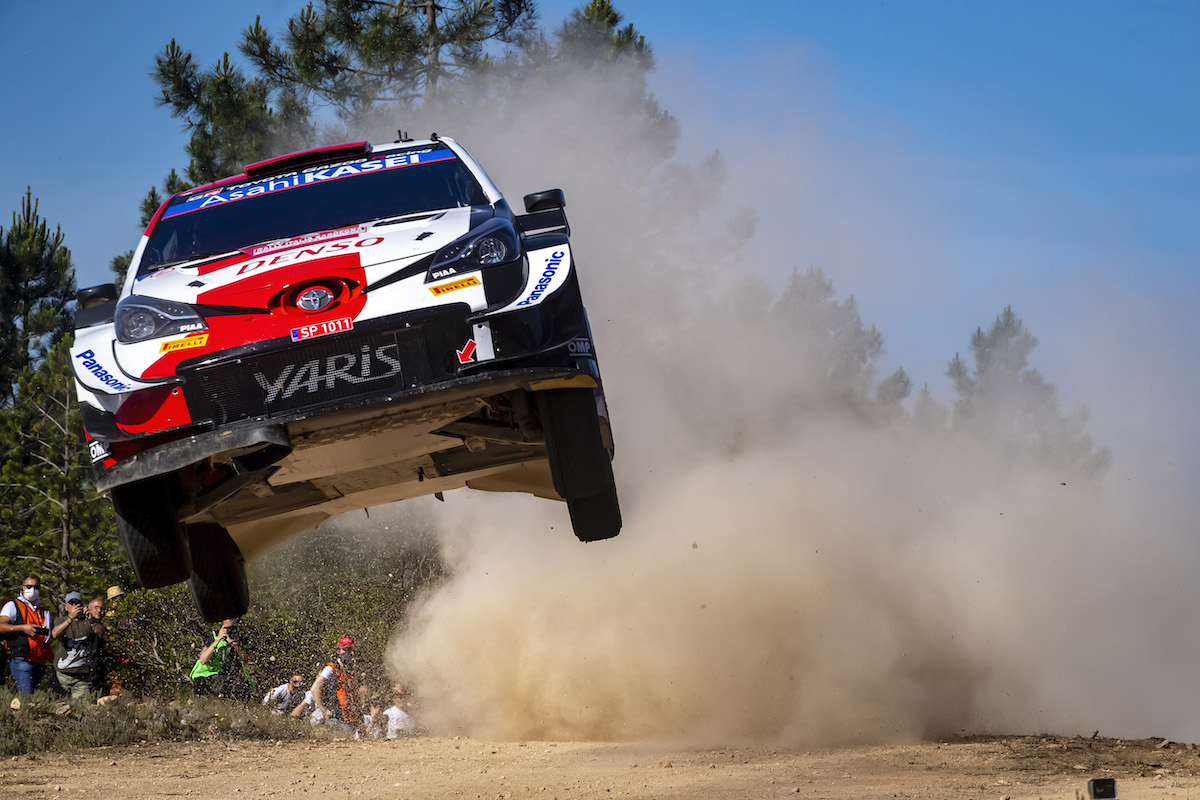
Photos: Toyota Gazoo Racing
Six years after making the bold switch from Japanese Formula 3 to rallying with Toyota’s backing, Takamoto Katsuta is now a podium finisher in the World Rally Championship and turning into hot property
The progression through the ranks of Japanese single-seater racing for a Toyota-supported junior driver is usually quite straightforward: From Formula 4 to Formula 3 (now Super Formula Lights) and onto the premier Super Formula championship. A seat in that top series is usually paired with a campaign in the equally prolific Super GT, and the best performers can maybe hope for a shot in the manufacturer’s halo racing programme in the World Endurance Championship.
Perhaps the best role model for this ladder of opportunity is Ryo Hirakawa: at 27 already a Super GT champion, last year’s SF runner-up and despatched last month to Portugal for a try out in Toyota’s latest WEC challenger, the GR010 Hybrid hypercar.
But the following week, one of Hirakawa’s former rivals and colleagues from the Toyota junior ranks was already stepping on an FIA world championship podium, having taken a rather different route to reach one of motorsport’s highest levels.
Takamoto Katsuta beat Hirakawa by five points to win the Formula Renault-based Formula Challenge Japan series in 2011, and went on to win races in Japanese F3 with TOM’S. But rather than continue to ascend the racing ranks in his homeland, he then made a dramatic swerve in career direction when he was chosen as one of two young Japanese talents that Toyota hoped to develop into drivers for its then-nascent World Rally Championship programme.
Even drivers as talented as Kimi Raikkonen and Robert Kubica had proven that switching from circuit racing to rallying in the modern era was far from easy. No manufacturer had ever taken a near-rallying novice and nurtured them to become a leading WRC contender, but last month Katsuta came second on the famously-gruelling Safari Rally in Kenya to take his maiden series podium – having fought his Toyota team-mate and seven-time world champion Sebastien Ogier for victory on the final day.
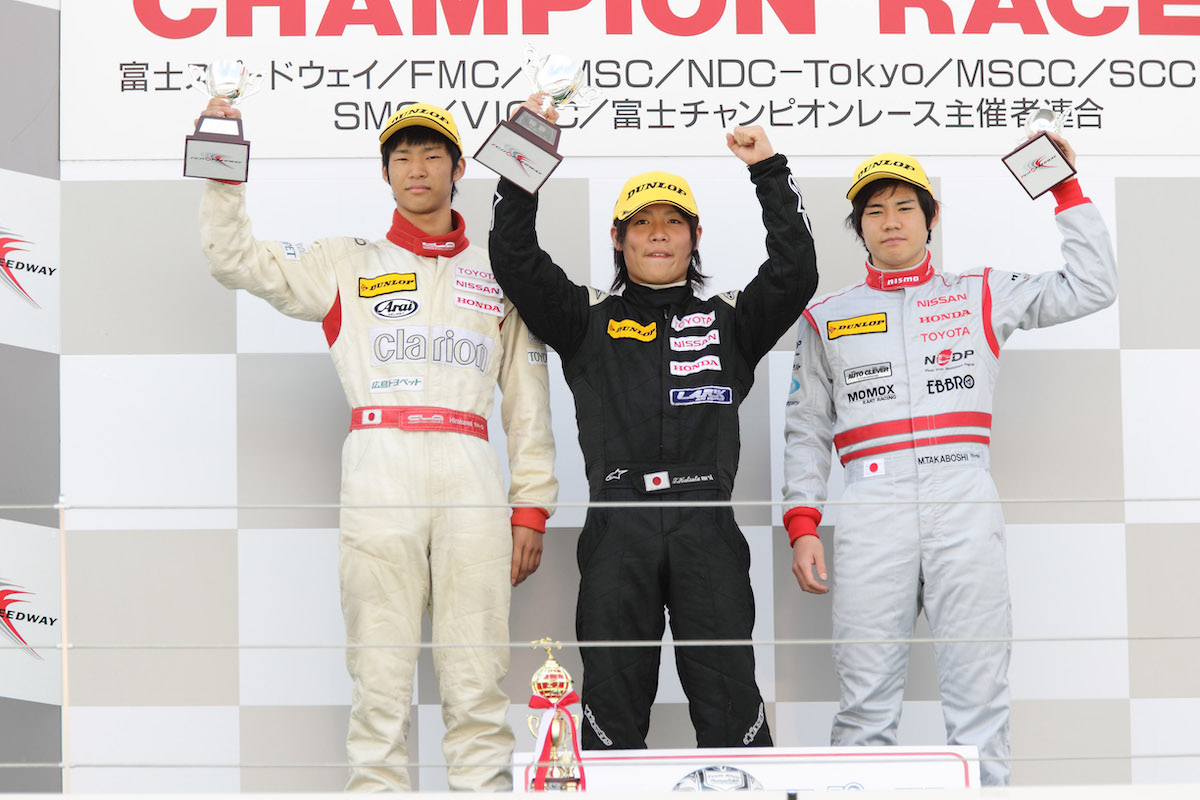
Katsuta with Ryo Hirakawa and Mitsunori Takaboshi in Formula Challenge Japan
Rather like his two other team-mates Elfyn Evans and Kalle Rovanpera, Katsuta is the son of a successful rally driver: Norihiko Katsuta continues to win rallies in Japan in his 50s, now driving a version of the Toyota Yaris – like his son – after a long association with Subaru. Katsuta’s grandfather even rallied. But unlike Rovanpera, who shot to stardom on YouTube driving a rally car at the age of eight, Katsuta was not bred to be a rally driver.
He raced BMX bikes before he started karting competitively at the age of 12. At first this was “just for fun”, but a year-and-a-half later he won a scholarship from Toyota and Yamaha – a big player in the Japanese karting scene – and Katsuta “started to think that I really wanted to win every race”. Naturally, a move to single-seaters followed with Toyota’s support.
“Of course in the beginning I wanted to be a Formula 1 driver, it’s normal,” he tells Formula Scout. “But then Toyota stopped F1 [after 2009]. Then basically I lost my biggest dream: I don’t know where I should go and what is my target. Of course, I was already a Toyota driver so I just focused on trying to win races as much as possible.”
As well as his FCJ triumph against Hirakawa in 2011, Katsuta continued to compete in karting, racing against Nyck de Vries and Alex Albon when the final round of that year’s world championship took place at Suzuka. He moved onto F3 with crack Toyota-backed outfit TOM’S, initially in the national class where he came third in 2012 before he was overall runner-up in 2013 to team-mate Yuichi Nakayama.
Katsuta’s 2014 season was almost an exact replica of 2013: two wins, 10 podiums and 80 points. But this time only fourth in the standings and not second. Nobuharu Matsushita won the title and went straight to GP2 with Honda support and a shot at F1, while Katsuta’s rookie team-mate Kenta Yamashita was runner-up. It was a strong field, but at 21 Katsuta’s single-seater progression had stalled. Still, developments elsewhere within the Toyota motorsport family had caught his attention.

“I heard some rumours that Toyota is coming back to WRC [for 2017], and at the same time they are planning to do a junior programme for Japanese drivers, so then I started to think a bit that rallying is one of the options. But I knew that moment already that rallying is going to be really hard, it’s not easy.”
Indeed, Katsuta’s own father had advised him against the switch, knowing just how challenging rallying can be. But the youngster pushed ahead with his own ambitions. Already in 2014 alongside his F3 campaign, he took part in three rounds of the Japanese national rally championship, with a couple of events already under his belt from previous years. Driving a Toyota GT86, he came second in his class on his first outing in 2014, then won on his second.
He submitted an entry to Toyota’s Rally Challenge Program, which rather like the development of the Yaris World Rally Car was entrusted to four-time world champion Tommi Makinen in Finland – rallying’s spiritual home. Fifteen-time winner Mikko Hirvonen was also among the experts assessing Katsuta and the rest of the young Japanese hopefuls.
Despite having never driven on gravel before he went to Finland, Katsuta was chosen to move forward in the programme together with Hiroki Arai – whose father Toshi was a WRC regular around the turn of the century as part of the iconic Subaru team. Coincidentally, Arai Sr and Katsuta Sr are each other’s closest rivals today in the Japanese championship.
In 2015, Katsuta moved to Finland and began training and competing on local rallies. Rather like many of his compatriots when they arrive in European single-seater series, he spoke barely a word of English, but quickly had to learn how to write pacenotes with British and Finnish co-drivers.
He jumped straight into a four-wheel-drive production-specification Subaru Impreza, skipping the usual entry-level two-wheel-drive category. Whether on snow in winter or gravel in summer, the stages in Finland and neighbouring Baltic region are the fastest in the rallying world. Predictably, there were some spectacular shunts for both Katsuta and Arai, especially when they moved to the faster R5 category after just one year and debuted against far more experienced competitors in the European championship in Estonia and the world championship in Finland.

“The first three years it was so hard,” Katsuta says. “Those years are really hard for me. I have no idea about – OK, I had some idea but it’s not enough – about pacenotes, and I couldn’t speak English well. Everything was so difficult, but I tried to work hard with my co-driver, and I went to recce training every day. We did 10,000 kilometres in two or three months, and then started to understand what is pacenotes.
“Then after that, in 2018, finally it paid off in Sweden. That was one of the biggest things for me and gave me a bit more confidence.”
Katsuta’s victory in the WRC2 support class on Rally Sweden was a huge breakthrough moment. He readily admits the Pirelli tyres fitted to his car that weekend gave him an advantage, but it was the way he managed that advantage under pressure from the reigning champion and local expert Pontus Tidemand that impressed the entire service park.
The win proved that Katsuta had the potential to compete at the highest level, and also helped to swing the previously hard-to-call comparisons with Arai decisively in his favour. From mid-season, Katsuta was chosen as the one driver to continue to the next stage of the programme.
This involved initial tests in the Yaris WRC and outings in the car on Finnish championship rallies through the first half of 2019, before a step up from WRC2 to the top class for the late-season rounds in Germany and Spain.
The fact Katsuta had never before driven on Germany’s tricky asphalt stages, and that Spain was the WRC’s only mixed-surface round combining gravel and asphalt, made these events a steep learning curve. But he got through them and gained the vital experience, and then started 2020 with a fine seventh place on the trickiest event of them all: the Monte-Carlo Rally.

With the rest of the Toyota WRC squad at a season-launch event in Tokyo in January 2020
The COVID-19 pandemic meant a break of nearly seven months between competitive action for Katsuta, but he was enjoying his most competitive run-out yet on the familiar roads of Estonia and running fifth before a final-day crash. That was followed by a tumultuous weekend with two offs in Sardinia, and then a first-stage error in the novel Monza Rally season finale.
But he rebounded fantastically over the rest of that weekend, which included snow-covered mountain tests as well as sections on Monza’s famous concrete banking and muddy parkland roads. In the end, Katsuta made his circuit experience pay with his strongest times yet, culminating in a maiden stage win in the rally-ending and points-awarding powerstage when all eyes were on Ogier securing his seventh title. Of the thousands of corners Katsuta had turned during 2020, this was perhaps the biggest.
What’s followed in 2021 for Katsuta has been little short of incredible, and according to some commentators the most impressive first half of the season from any of the current WRC contenders – which is quite something considering Ogier has won four out of the first six rallies.
Sixth on Monte Carlo was his best result so far, one matched in the subsequent rounds in Finnish Lapland and on the brand new roads of Croatia – where he took two stage wins. Then came consecutive fourth places on the rough gravel stages of Portugal and Sardinia: The first with a strong performance in which he rivalled Ogier for a podium place, the latter with a solid and careful drive on the island that bit him so hard eight months earlier.
That set him up well for the WRC’s return to Africa and Kenya after nearly 20 years away, where he stuck to his plan to avoid trouble and was rewarded on the Sunday morning with the rally lead for the first time in his WRC career. He couldn’t quite hold off the charging Ogier, but second place was a momentous result: the first Japanese driver on a WRC podium for 27 years on an event with a special meaning to Toyota, as well as a landmark in Katsuta’s six-year journey to this point.

Katsuta’s progress this season has coincided with an overhaul in the operation of the Toyota WRC squad following the outright purchase by the Japanese manufacturer of Makinen’s squad. In as team principal has come Jari-Matti Latvala – a winning part of Toyota’s driver line-up between 2017 and 2019 – and alongside that, the appointment as Katsuta’s coach of Juho Hanninen: another member of the original Yaris WRC driving roster and now the team’s test driver. It means Katsuta now benefits from two incredibly-relevant guides advising him, and he’s quick to pay tribute to both.
“This year has been pretty good so far,” he says, with his typical modestly and a desire for continuous self-improvement.
“Still I can see so many things I need to improve and I need to work hard still. But one of the things is, Jari-Matti and Juho of course, even the team guys, they are supporting me very well, so I have more confidence, I have more ideas, and also at the same time I’m getting more experienced [with] every rally, every test. So that’s why I can more trust the car and be more confident in the car. This makes so much difference.”
In contrast to junior single-seater racing, a dedicated driver coach is more of a rarity in rallying, but also something Katsuta didn’t benefit from in his own F3 days. A parallel he does see is the ability to use data to compare his driving with that of his team-mates: a tool that is less well-documented in rallying but one that’s been incredibly useful to Katsuta alongside three strong and equally-matched drivers in Ogier, Evans and Rovanpera.
“Basically, how you look at the data is the same,” he says. “Of course it’s a different type of graph, but where you need to look, it’s quite the same; where you’re losing time. And this kind of idea I was very used to in F3, so it’s not a big issue when I’m discussing with the engineer. If I look at the data I can immediately see where I’m losing and where I need to improve. If it’s exactly the same test road, then you can compare, and it’s really nice to see. But in the rally stage it’s a bit different, because you don’t know the road.”
But what was the hardest thing to get used to coming from single-seaters?

“For sure the pacenotes are a really big thing. And of course in rallying you have so many different type of conditions, even on Tarmac, you have gravel on Tarmac, and [it’s] slippery and it can change a lot. It’s not like circuit racing. So the mental side is quite hard. You want to push but if you push a little bit too much then you’re off and crash, so it’s so difficult.”
To the eye, the driving style is substantially different too: rally drivers are famous for getting sideways, especially on gravel.
“I like sliding a lot,” Katsuta laughs. “Already when I was karting. It’s not fast on the track if you’re sliding too much but I loved it, and sometimes [when] just hobby karting on rain conditions on slick tyres, just sliding a lot and that kind of stuff, I really loved it.
“So it was not so big issue when I started gravel driving, I really enjoyed that. Of course it’s different, but basic things, how to drive fast, it’s very similar. The car needs to be moving forward, braking in a straight line as much you can. It looks completely different but there are some things which are similar and the same.”
Something that has developed just since Katsuta made the switch to rallying has been the increasing influence of aerodynamics in the latest generation of World Rally Cars like the Yaris, which as a result can corner quicker than anything that came before them.
“This is what I’m used to a bit in F3,” he says. “Trust the air. You can’t see it, but you just trust the air, and it’s a slightly similar feeling as what I have now in Yaris WRC. So much downforce [and] if you are higher-speed then it’s even more grip. That is incredible and I really love it, and now I really can use some kind of experience from the track.”
While living half the world away from most of them, Katsuta has kept in touch with many of his rivals from his F3 days and other stars from the Japanese racing scene, including the likes of Matsushita and Yamashita as well as Nick Cassidy, who took Katsuta’s place in the TOM’S F3 line-up and is now a Formula E ace.
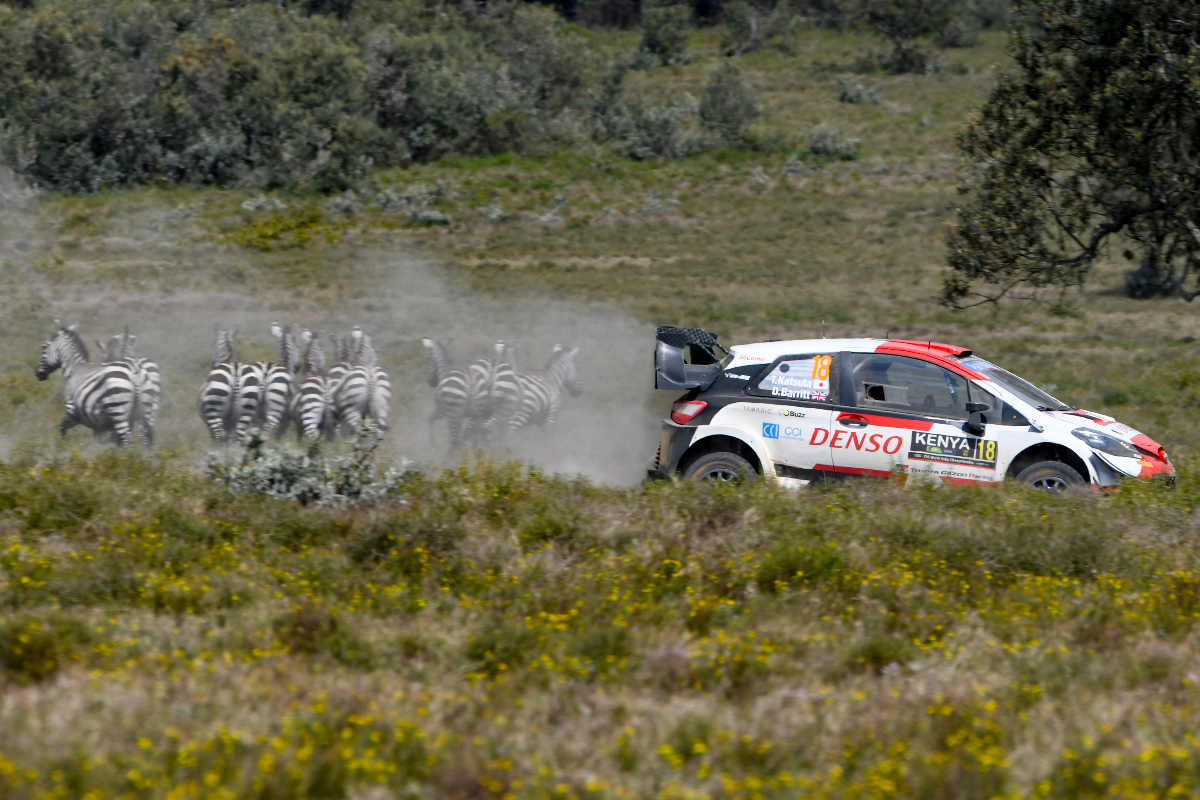
Navigating Safari Rally Kenya’s wildlife
Just like Hirakawa, Katsuta now has the support of Red Bull Japan, and there’s another Red Bull star from the country he holds in high regard – albeit one who’s been in Honda’s stable rather than Toyota’s.
He first got to know Yuki Tsunoda when the current AlphaTauri F1 driver was karting, and Katsuta was supporting rival and friend Kazuto Kotaka who’s since climbed the Toyota ladder from F4 all the way to Super Formula.
“He [Tsunoda] is very impressive, because three years ago he was in F4 in Japan, and the first time ever he went to Europe was two years ago in F3. His results were not so good but he still won races, even though the car was not very fast I guess. But Red Bull people are very clever and they know about the level of the team and everything, so they think he can do Formula 2 and he stepped up to F2 and he did a great job last year. That was very impressive.
“Now [in F1] it’s a difficult situation for him, but it’s for sure because it’s only three years he has been in Europe and it’s never easy. So many opinions from people around him and fans also, but I would like to say that sometimes you need to ignore those voices around you and just focus yourself. He can do it, for sure. He’s good.”
Ogier once dabbled in single-seaters himself, racing (competitively) against Tsunoda’s current team-mate Pierre Gasly in French F4. He’s also looked quick in Porsches and in the DTM, and is now in what he says will be his final full season in the WRC, with hopes of combining occasional outings in the next-generation Yaris Rally1 car with a tilt at the Le Mans 24 Hours with Toyota. At this point in his career, Katsuta has to keep focused on rallying, but certainly doesn’t shut the door on a return to the track, and especially single-seaters.
“Of course I love racing, so I would like to try it [again] at some point in my career, back to racing once or twice, but now I need to fully focus for rallying. So not now for sure, but at least for me I would like to try again formula [racing] at some point. Not maybe WEC, it’s more like endurance, for me [I like] more this kind of sprint races. Even karting is very good, I would like to do a karting race [again] also.”
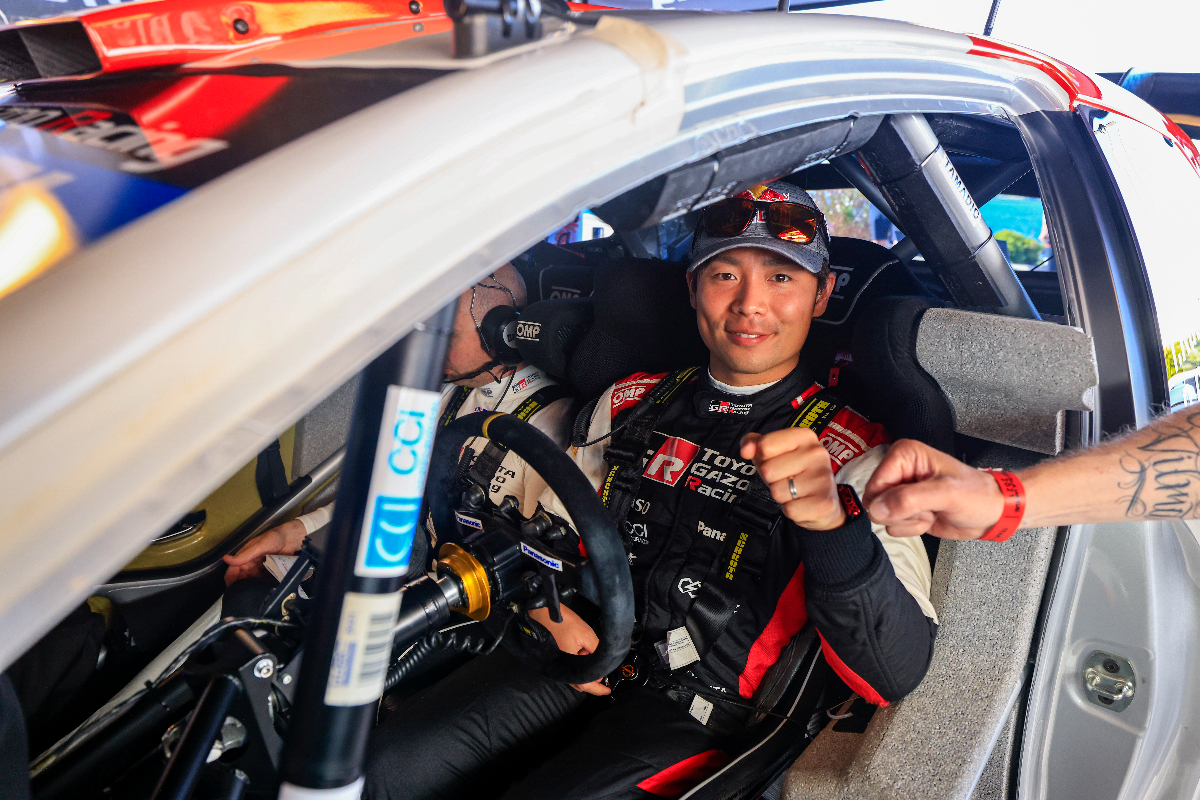 If the Safari Rally podium was a surprise to him, Katsuta has high hopes for the next round in Estonia and October’s Rally Finland on the kind of high-speed roads on which he served his rallying apprenticeship. Then there’s Rally Japan in November, returning to the calendar after more than a decade out and now based out of Katsuta’s home city of Nagoya, on asphalt. If it goes ahead as planned and the home fans are allowed to watch stageside, the enthusiasm around ‘Taka’ will be huge.
If the Safari Rally podium was a surprise to him, Katsuta has high hopes for the next round in Estonia and October’s Rally Finland on the kind of high-speed roads on which he served his rallying apprenticeship. Then there’s Rally Japan in November, returning to the calendar after more than a decade out and now based out of Katsuta’s home city of Nagoya, on asphalt. If it goes ahead as planned and the home fans are allowed to watch stageside, the enthusiasm around ‘Taka’ will be huge.
It could also inspire the next generation, with Toyota poised to launch a second campaign to find another future rally star from Japan. Just maybe, that driver will follow in Katsuta’s footsteps and make the switch from circuit racing now that it’s been proven to be possible.
More junior single-seater racers who turned to rallying
Drivers who competed on a full-time basis in junior single-seater racing before doing the same in rallying soon afterwards.
Carlos Sainz: Sainz Sr raced in Formula Ford alongside playing football and squash before switching to rallying. He won the 1990 and 1992 WRC titles for Toyota, and approaching his seventh decade is still going strong in rally raid, where he’s joined Audi’s new Dakar Rally project.
Stephane Sarrazin: After his one and only F1 start with Minardi in 1999, Sarrazin was racing in World Series by Nissan four years later when he also won the French Tarmac rally title. That earned a place in Subaru’s factory WRC line-up, and he finished a fine fourth in Corsica. But working for Prodrive boss David Richards also created chances in sportscars with Aston Martin, and LMP1 seats with Peugeot and Toyota followed along with Formula E. Still rallies frequently and runs his own team as well as sharing a car in the new Extreme E series with W Series champion Jamie Chadwick. His 15-year-old son Pablo is karting at a senior level, has tested in F4, and will make his rally debut this year.
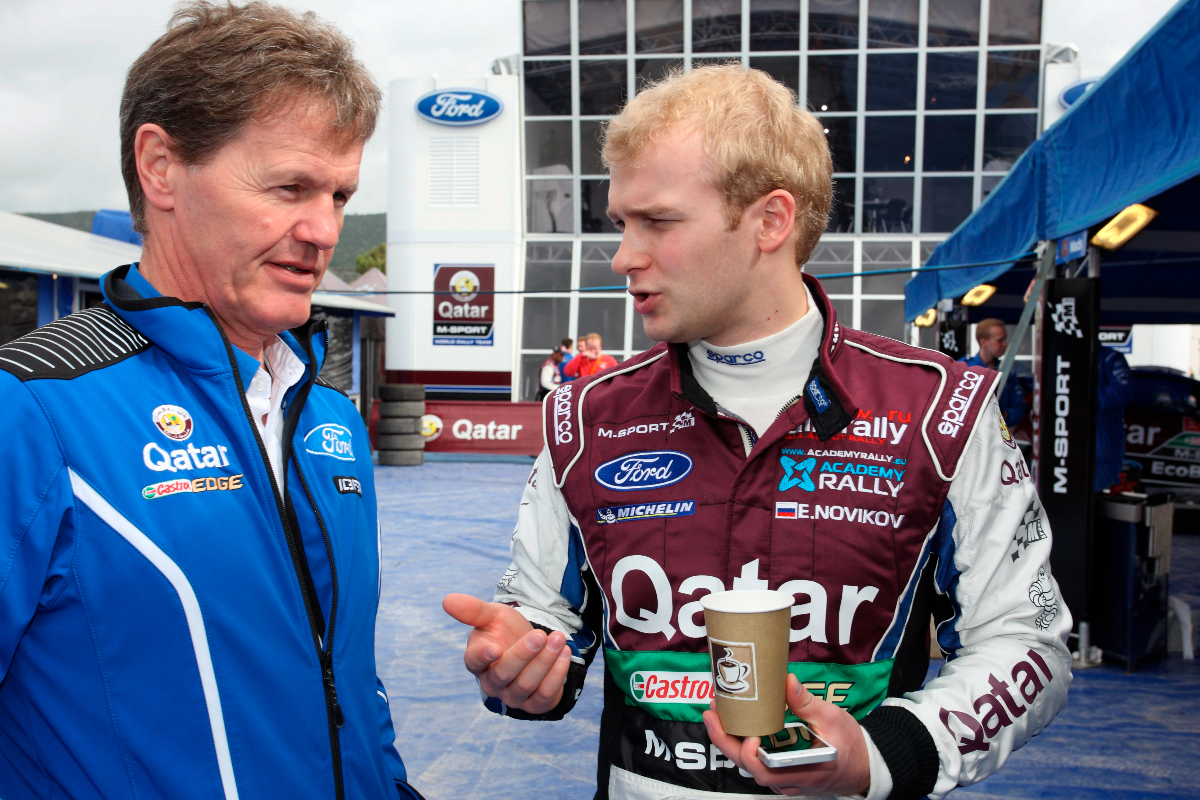
Photo: M-Sport WRT
Evgeny Novikov: Russian raced karts internationally with some success and came third in the domestic Formula RUS series before a rapid rise to rallying’s top level, where he was team-mate to Ogier in Citroen’s junior team aged 18. He still holds the record today for the youngest ever stage winner, and also crashed a lot, yet went on to finish second in both Portugal and Sardinia with M-Sport in 2012 – only for his backing to run dry by the end of the following season.
Tomas Kostka: Czech driver reached Formula Renault 3.5 and contested a DTM season in 2009 before switching focus to rallying, where he’d already been a regular on his hometown round of the European championship, Barum Czech Rally Zlin. He’s since scored three podiums on that event, and made two WRC appearances in 2013.
Matthew Wilson: Son of British rally champion Malcolm Wilson won tin-top T-Cars series aged 15 before racing against Lewis Hamilton in Formula Renault. A six-year stint in the WRC driving for his father’s M-Sport Ford operation followed, and he’s since returned to the track, overseeing the company’s successful first GT racing foray with Bentley.
Matthieu Arzeno: Was runner-up in French Formula Campus (now F4) and Formula Renault (to Jules Bianchi) before running out of budget and following his father into rallying – where he immediately took a two-wheel drive Renault Clio to 12th overall on the Monte Carlo Rally. Later finished 10th on Rally Germany in 2012, but has mostly been restricted to France since.
Sebastien Chardonnet: Raced against Arzeno in both FCampus and FR2.0 before switching to rallying, where he also had family pedigree. Earned backing from the French federation and Citroen, and with that comparisons to world champion namesakes Loeb and Ogier – especially after finishing 10th on his top flight debut on home soil in 2012, then winning the WRC3 title a year later. Yet his career rapidly ran out of steam after a season driving Citroen’s troublesome WRC2 challenger of the time.
Brandon Maisano (pictured below): One shot at F3 with Prema with Ferrari backing was followed by another with support from the Stroll family, only for him to quit mid-season in 2015. Four seasons in French single-make rally series followed, culminating in sixth in the junior championship in 2019.

Photo: Alpine / DPPI
Mattia Vita: Finished seventh in the KF3 Karting World Cup won by Charles Leclerc in 2011, and went on to contest a handful of races in FR2.0 and Euroformula before taking up rallying – another taking after his father in doing so. Contested a European campaign in 2018 and is now a leading contender in the Italian junior ranks while continuing to compete in karts with the PCR factory team.
Martin Stenshorne: Norwegian went from karting to the Barber Dodge Pro Series in the United States in the late 1990s and then onto rallying, where he came sixth in the Junior WRC season dominated by Loeb in 2001. Continued competing regularly in Norway until 2009 before turning attention to son Martinius, a star of European karting who’s been signed up by Nicolas Todt’s All Road Management while driving for Leclerc’s factory team.
Chewon Lim: Korean driver Lim mirrored Katsuta by going from racing a Dallara F3 car (in Euroformula) to being the chosen national protege of Toyota’s big WRC rival Hyundai – albeit doing so at the age of 32 and earning his shot through a reality television show. Half a season in a two-wheel-drive Opel was followed by a full one in Hyundai’s R5 car in 2017 before the programme was shelved.
Jeremy Wahome: Still only 22, the Kenyan was racing in BRDC British F3 a few years ago, and appeared in Asian F3 in 2018. He returned to the motorsport radar a few weeks ago on his home round of the WRC, making his rally debut in one of M-Sport’s brand new third-tier Rally3 cars through the FIA Rally Star programme helping young drivers into rallying. Remarkably he ran as high as 12th, and finished 16th overall with class victory. The car is now his to use to enter the Kenyan Rally Championship full-time.